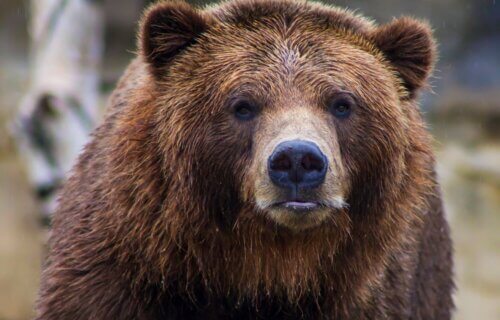PULLMAN, Wash. – Bears are ferocious carnivores that eat anything they get their paws on, right? Not so fast. A new study explains that there’s growing evidence bears would rather eat a bowl of fruit rather than a camper they find in the woods.
A team from Washington State University studied the diets of giant pandas and sloth bears and found that the ursids more closely resemble omnivores. Bears also appear to need much less protein than they typically receive in zoos.
“Bears are not carnivores in the strictest sense like a cat where they consume a high-protein diet,” says lead author Charles Robbins, a WSU wildlife biology professor, in a university release. “In zoos forever, whether it’s polar bears, brown bears or sloth bears, the recommendation has been to feed them as if they are high-protein carnivores. When you do that, you kill them slowly.”
Despite incidents at camps sites, where bears tear through any food they see, the team notes that bears are not cats or dogs. When humans feed them like that, the study finds it shortens their lives significantly by causing diseases like liver cancer.
What would a bear eat at a buffet?
In their experiments, researchers gave giant pandas and sloth bears living in captivity in U.S. zoos an unlimited food supply containing different types of meals. They then recorded the bears’ choices to see what the animals prefer.
Working with researchers from Texas A&M University and the Memphis Zoo, the team found a pair of giant pandas preferred a carbohydrate-rich bamboo culm found in the woody stalks. The animals chose this over protein-rich leaves. Pandas ate this culm almost exclusively, including 98 percent of the time during the entire month of March. Observations from five Chinese zoos confirmed this preference among panda bears, who also ate a high-carbohydrate, low-protein diet.
Experiments with six sloth bears at the Cleveland, Little Rock, and San Diego zoos, also revealed that the ursids preferred fat-rich avocados over baked yams, whey, and apples. In fact, the bears preferred eating avocadoes 88 percent of the time, yams 12 percent of the time, and completely ignored the apples. The team believes this diet mirrors a sloth’s diet of termites, ants, and their eggs and larvae in the wild.
The meals bears preferred is extremely different from the high-carbohydrate diets these animals typically eat in captivity. Concerningly, sloth bears live for roughly 17 years in U.S. zoos. That’s nearly two decades less than the maximum lifespan this species is capable of under human care.
Previous studies have found that captive polar bears typically die about 10 years earlier than they should. Most of them die of either kidney or liver disease. These diseases often develop due to long-term inflammation coming from a poorly-balanced diet.
Who turns down free fish?!
Study authors say their findings reveal that, when bears have a choice, they choose foods that mimic what they would eat in the wild. Interestingly, these foods are not what many people probably associate with bears — like meat.
“There’s certainly this long-standing idea that humans with Ph.D.s know a lot more than a sloth bear or a brown bear,” Robbins says. “All of these bears started evolving about 50 million years ago, and in terms of this aspect of their diet, they know more about it than we do. We’re one of the first to be willing to ask the bears: What do you want to eat? What makes you feel well?”
Robbins, the founder of the WSU Bear Center, started studying bear diets in Alaska while watching grizzlies eat salmon. Until then, scientists suspected that grizzlies would feast on salmon, sleep, and then come back for more fish. However, they found that grizzlies actually wandered off to find berries after eating that first salmon meal.
The study authors say all eight kinds of ursids (bears) share a common carnivore ancestor. Since then, bears have evolved to consume a wide variety of foods, which gives them the ability to live in more areas — and snack on many things people leave at their camp sites.
“It just opens up so many more food resources than just being a straight, high protein carnivore,” Robbins concludes.
The study is published in Scientific Reports.


Riiiiggghht…….